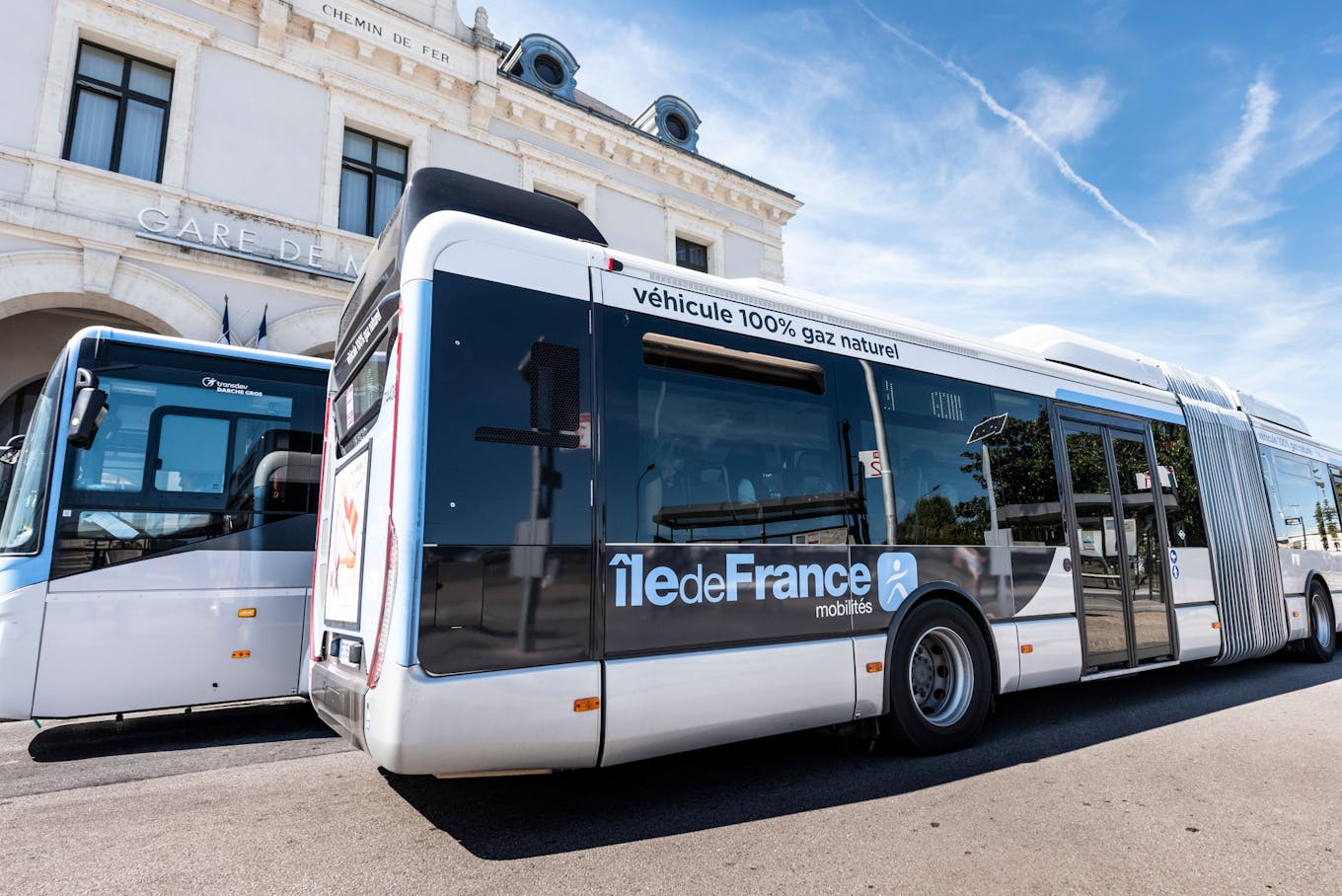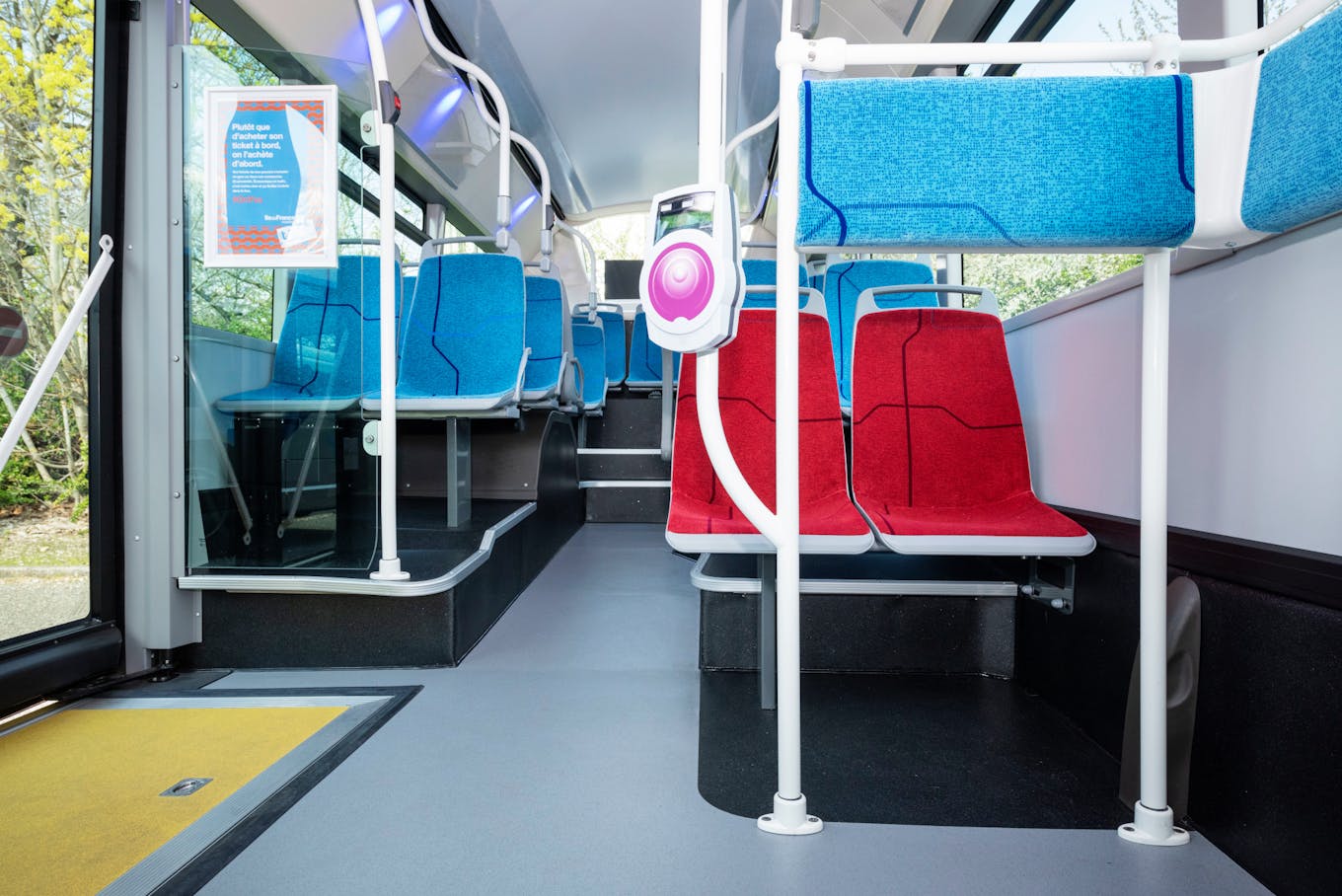
A growing network
Additional resources are devoted to the development of this network, which is essential to the mobility of Ile-de-France residents , and particularly to the inhabitants of the outer suburbs. Between 2017 and 2019, Île-de-France Mobilités improved 900 lines, which also resulted in the purchase of 500 new vehicles and the creation of more than 2000 jobs.
The improvements are mainly aimed at adapting the operation of the lines to the pace of life of Ile-de-France residents: increase in the frequency of passage during the day or during rush hour and improvement of timetables, with earlier and/or later buses. Sometimes it is the routes of the lines that must be adapted to the evolution of the territories, such as new facilities or districts to be served, the transformation of a street into a pedestrian axis, the creation of cycle paths, etc.
A network redesigned for the first time in 70 years
For example, the routes of the lines in Paris, which had hardly changed for 70 years, were largely redesigned in April 2019, in particular to better serve many districts whose population has grown significantly since the 1950s.
Clean, comfortable and safe buses for all lines
Objective clean buses!
All the buses ordered since 2016 run on either electricity or biomethane. Our goal is the most ambitious in Europe in terms of energy transition: to have a 100% clean bus fleet by 2025 for the densest areas of the region and 2030 for the entire region! More than 350 clean buses are already on the road and in 2020, around 600 clean buses and coaches will arrive on the network to replace diesel buses and coaches.

Welcoming these new vehicles requires having Bus Depots adapted to new technologies, in order to be able to recharge them with electricity or biomethane. In addition, Île-de-France Mobilités is also testing several hydrogen-powered vehicles on a regular route in the Versailles sector.
And the comfort of passengers?
Since 2019, all buses purchased by Île-de-France Mobilités have been gradually equipped with soft air conditioning to improve user comfort, and a new interior design with a new seat colour system to better show the seats reserved for priority passengers (blind people, pregnant women, the elderly, people who have difficulty standing such as a person with crutches...).

Safer buses too
In addition to video protection and radiolocation , which equip nearly 100% of the region's buses, the human presence is essential to reassure passengers.
In addition to the agents of the SUGE (General Surveillance) and the GPSR (Network Protection and Security Group) deployed on the networks operated by the SNCF and RATP, Île-de-France Mobilités finances more than 520 mediation agents throughout the network in order to support passengers on a daily basis.
200 private security agents financed by Île-de-France Mobilités and employed by transport operators have also been deployed since 2017. Through their daily and dissuasive presence, they guarantee the safety of passengers, employees and property, and reduce the feeling of insecurity.
Finally, an unprecedented partnership was concluded in 2019 with the national gendarmerie which, thanks to funding from Île-de-France Mobilités, allows it to carry out 1000 patrols per year as a gendarmerie reservist.
Descent on demand
To improve the feeling of safety of passengers, and in particular of women who use buses and return late at night, Île-de-France Mobilités has set up the on-demand disembarkation service , which consists of offering the possibility to anyone who requests it to get off between two bus stops, in order to bring them closer to their final destination. This service, which is particularly relevant when the stops are far away, is set up in the evening or at night from 10 p.m. 70 lines were affected by this system in January 2019 and new lines are gradually offering it.
Increasingly accessible lines
Almost all buses and coaches now have the necessary equipment to accommodate people in wheelchairs. For a bus line to be considered accessible to people who need to travel with the help of a wheelchair, at least 70% of the stops must allow them to get on and off the bus - Île-de-France Mobilités finances the legal maximum of 70% of the cost of the work carried out by road managers (municipalities, inter-municipalities, departments, etc.) to make bus stops accessible, Because it's not just about having buses equipped with access ramps!
While thebus network in Paris has been fully accessible for more than 10 years, this is also the case for more than 500 bus lines throughout the region (September 2019), a figure that is constantly increasing (212 in 2014).
Practical information
Price
The price of a bus journey is one t+ ticket per trip and two t+ tickets for destinations beyond two zones. For holders of a Navigo pass, bus journeys are included. For passengers using Navigo Liberté+, the ticket is at the carnet rate from the first trip.
Good to know: you can buy your bus ticket by SMS, no need to buy your tickets at the ticket office or at a terminal!
Timetables
The timetables and maps of the 1,500 bus lines can be consulted directly from the route planner.